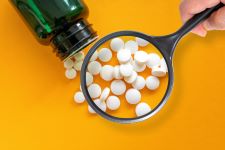Resources
Search >>
Search >>
Spices are known to have antimicrobial and PCR inhibitory components. This research validates the performance of the BACGene Salmonella spp. realtime PCR assay for detection of Salmonella in seven spice matrices and an additional nine spices via matrix verification.
Dietary fiber testing in supplements is a highly complex process, requiring careful selection of testing methods customized to specific fiber sources. Many companies may struggle with choosing the right dietary fiber testing methodology, often defaulting to the most convenient or cost-effective option without realizing the implications. This blog will review common types of dietary fiber sources used in supplements along with strategies to ensure accurate and timely results.
In today’s food, dietary supplement, and beverage industry, ensuring accurate sugar content in products is more important than ever. With increasing consumer awareness about nutrition and stricter regulatory requirements, companies must verify and control the levels of sugars present in their products. Sugar testing plays a vital role in maintaining product quality, meeting labeling regulations, and supporting claims such as “low sugar,” “no added sugar,” and “zero sugar.” This blog explores the different types of sugars and sweetener alternatives and considerations when submitting products for testing.
Setting Chemical Contaminant Specifications for Dietary Supplements: Navigating the CFR Requirements
Ensuring the safety and quality of dietary supplements is a cornerstone of regulatory compliance. Among the most critical steps in this process is establishing specifications for chemical contaminants. These contaminants, which can arise from raw materials, manufacturing processes, or environmental exposure, must be controlled to meet the standards outlined in the Code of Federal Regulations (CFR). This guide is designed to assist manufacturers in establishing strong chemical contaminant specifications while ensuring regulatory compliance.
The demand for shelf-stable beverages continues to grow across categories, from juices and ready-to-drink teas to dairy-based and plant-based protein drinks. However, ensuring both safety and product integrity requires a clear understanding of processing methods, particularly as they relate to high-acid vs. low-acid beverages. This white paper outlines best practices for processing high-acid and low-acid beverages, common formulation challenges, and key factors for ensuring a safe, high-quality final product.
Keywords:
Blog. Beverages
Dairy
Pet owners might turn to nutraceuticals that may support relief in some Osteoarthritis (OA) symptoms. One such nutraceutical is chondroitin sulfate. Explore new scientific developments happening at Eurofins in Des Moines, IA for quantifying chondroitin sulfate in complex matrices like pet food and treats.
Testing complex botanical matrices using HPTLC goes beyond simply running a sample through a machine—it requires a deep understanding of both the plant material’s unique properties and the strengths and limitations of HPTLC. In this article, we’ll explore the intricacies of testing complex botanical samples using HPTLC, highlighting the challenges involved and how this technique can effectively overcome them—even in the most complex matrices.
(HPTLC) has established itself as the preferred analytical tool for identification of botanical samples. As with any analytical method, validating the HPTLC method is crucial to ensure that it produces reliable, accurate, and reproducible results. In this article, we will explore the process of HPTLC method validation, why it is necessary, and the critical parameters to consider.
Discover how increasing tariffs on agricultural commodities may heighten the risk of food fraud within global supply chains and explore key strategies to safeguard product integrity.
Sugar reduction is a growing priority in product development as consumers seek to address concerns related to sugar consumption. Removing sugar from a formulation presents several challenges beyond just replacing its sweetness. This article walks through considerations that must be made for a successful sugar reduction strategy.
















